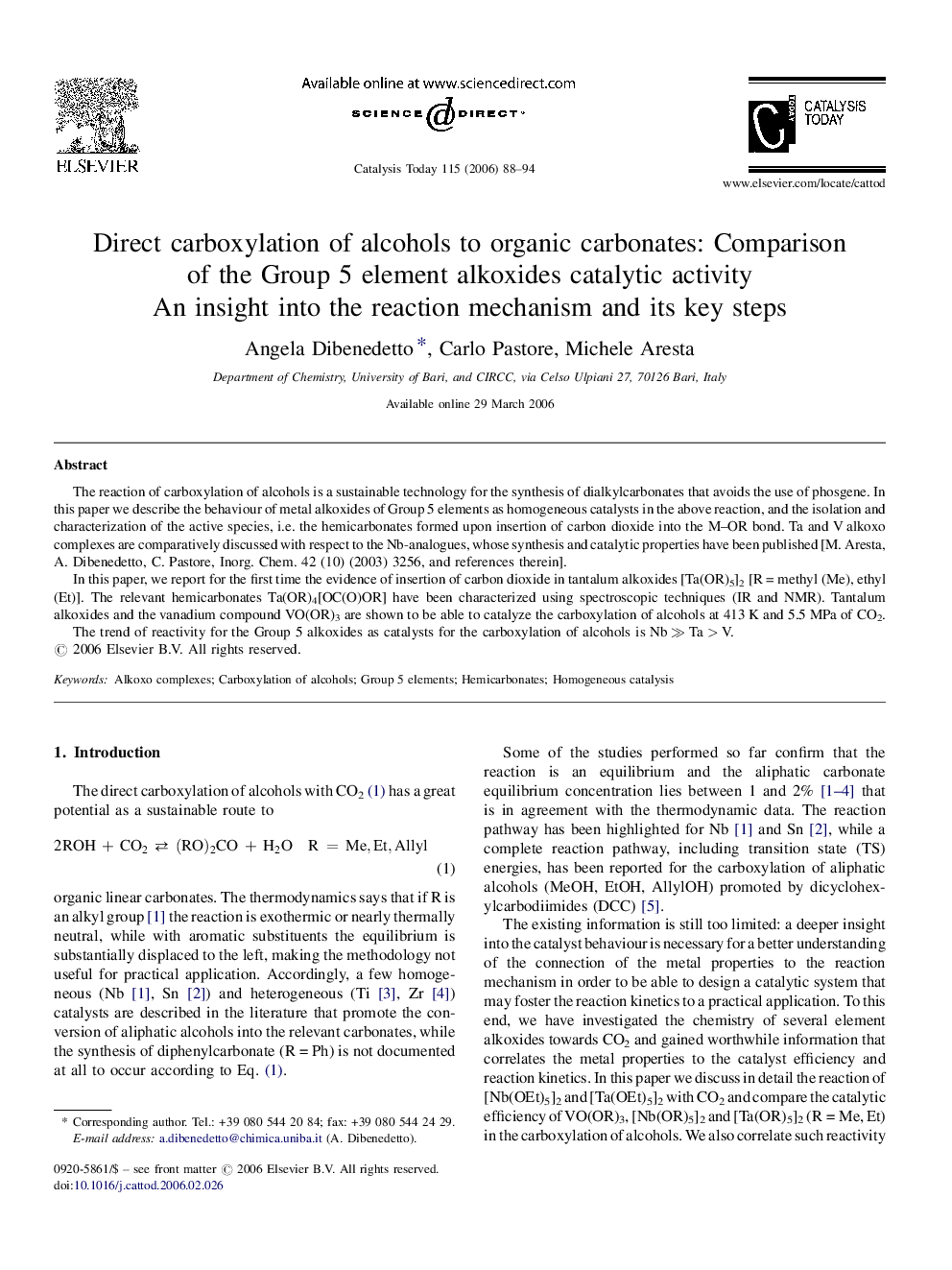| Article ID | Journal | Published Year | Pages | File Type |
|---|---|---|---|---|
| 58839 | Catalysis Today | 2006 | 7 Pages |
The reaction of carboxylation of alcohols is a sustainable technology for the synthesis of dialkylcarbonates that avoids the use of phosgene. In this paper we describe the behaviour of metal alkoxides of Group 5 elements as homogeneous catalysts in the above reaction, and the isolation and characterization of the active species, i.e. the hemicarbonates formed upon insertion of carbon dioxide into the M–OR bond. Ta and V alkoxo complexes are comparatively discussed with respect to the Nb-analogues, whose synthesis and catalytic properties have been published [M. Aresta, A. Dibenedetto, C. Pastore, Inorg. Chem. 42 (10) (2003) 3256, and references therein].In this paper, we report for the first time the evidence of insertion of carbon dioxide in tantalum alkoxides [Ta(OR)5]2 [R = methyl (Me), ethyl (Et)]. The relevant hemicarbonates Ta(OR)4[OC(O)OR] have been characterized using spectroscopic techniques (IR and NMR). Tantalum alkoxides and the vanadium compound VO(OR)3 are shown to be able to catalyze the carboxylation of alcohols at 413 K and 5.5 MPa of CO2.The trend of reactivity for the Group 5 alkoxides as catalysts for the carboxylation of alcohols is Nb ≫ Ta > V.
